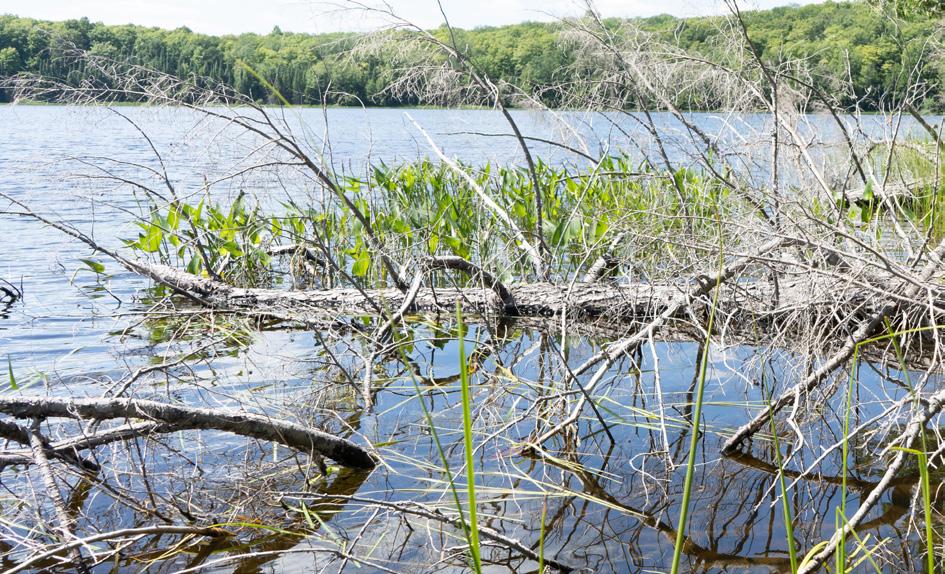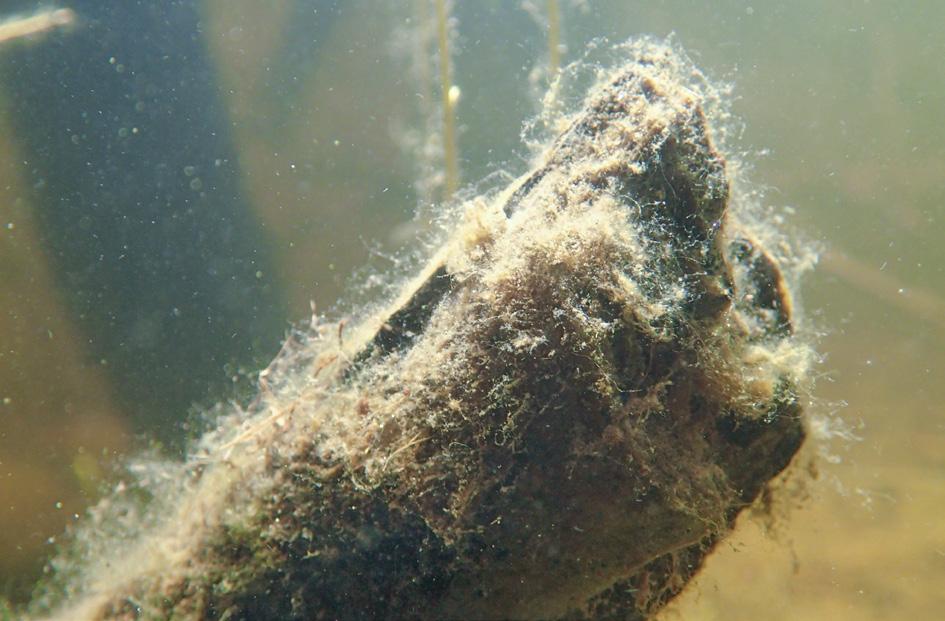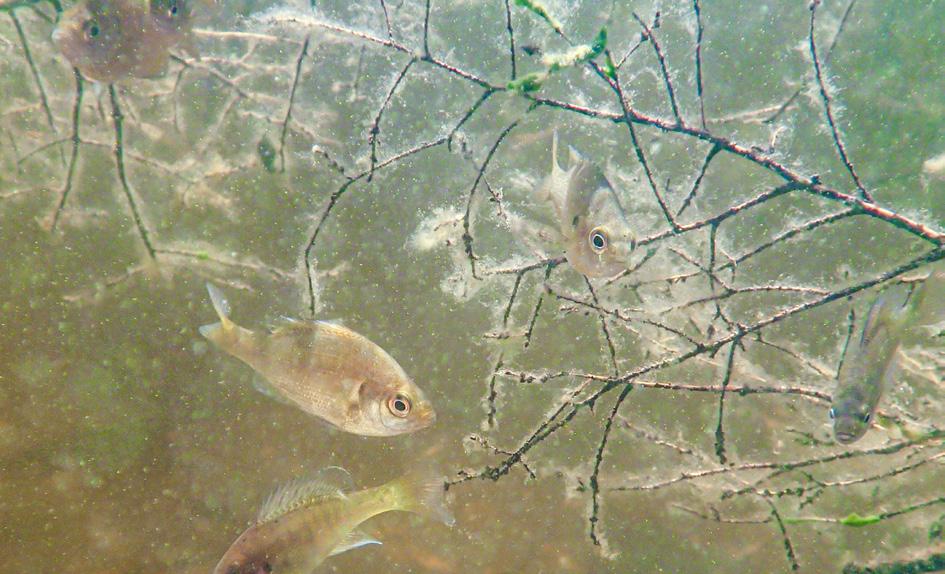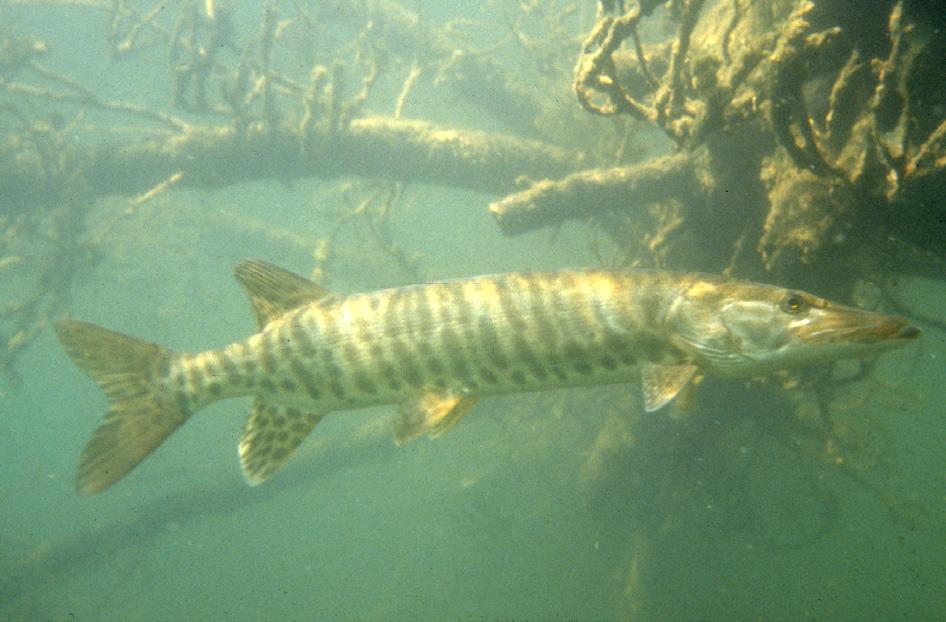
5 minute read
Tipping The Scales In Favor Of Fish
Garrett Dietz
Garrett Dietz is a public information officer in the DNR’s Office of Communications.
Increase Fish Production In Your Local Lake With This Simple, Nature-Based Solution!
It sounds like a bad infomercial or a clickbait webpage headline. But it’s actually an exciting reality that the DNR’s Office of Applied Science has validated through an ongoing study in northern Wisconsin.
The “simple solution” is adding coarse woody habitat, the technical term for large, dead wood.
Think whole trees, logs or branches that naturally occur in forests and fall into nearby waterbodies. For northern temperate lakes, this wood is the main source of new nutrient inputs.
When Greg Sass, fisheries research team leader, started the study back in 2015, there was one central question: Does adding coarse woody habitat to lakes simply attract fish to congregate around the new structure or does it actually help increase a lake’s carrying capacity and produce more fish?
Sanford Lake in Vilas County was selected for the research project. The first three years of the study involved monitoring the lake to understand its baseline fish populations and limnological conditions.
Once a baseline was established, the research team added coarse woody habitat to Sanford Lake’s aquatic ecosystem by cutting down 140 trees from the adjacent riparian zone, where the landscape transitions from an aquatic ecosystem to upland vegetation.
Then they started monitoring the potential influences of this habitat manipulation.
“Through this research, we discovered the answer to our initial question is that fish production is directly related to carbon inputs coming off the landscape,” said Sass, Ph.D., who oversees the DNR’s Northern Highland Fishery Research Area.
“Since we added new coarse woody habitat to the lake in 2018, we’ve seen fish production double.”
This isn’t just a bold claim — this is the work of a decade of research and monitoring, which will continue until the study ends in 2031. The next step is to drop more trees and continue adding coarse woody habitat to the lake to see how that further influences fish production.

Key Findings
The process for the study so far has been relatively simple, but the results speak for themselves. Essentially, the process stimulates the bottom-most level of the aquatic food web, creating a ripple effect throughout the ecosystem (see sidebar).
As the primary food sources at each level of the food web expand over time, the carrying capacity, or population a lake can support, increases for all the different species in the ecosystem.
These are important findings, and not just for fish and anglers. They are also key for lakefront property owners, recreators and developers who live, explore and build along the shores of these ecosystems.
The findings of the study, funded by Federal Aid in Sportfish Restoration, are a bit more nuanced than simply adding trees to double fish production, Sass noted. And increased numbers may not occur in every type of lake, such as eutrophic waters (rich in nutrients that promote plant life, meaning less of the dissolved oxygen needed by fish).
Still, this study shows just how crucial coarse woody habitat is for lakes, said Sass, who also has used the project as a jumping-off point for related research.
“Wood is a natural part of the northern temperate lake ecosystem, and everything from fish and turtles to birds and plant life benefits from it,” Sass said.

How To Lend A Helping Home
Adding coarse woody habitat can improve the carrying capacity of a northern temperate lake fish community, allowing the lake to support more overall fish. Here’s how it works.
1. Trees in the forest surrounding the lake are cut down and added to the water (these are called “tree drops”) to increase the amount of coarse woody habitat in the system. Trees also can be brought to lakes from other areas (these are called “fish sticks”) to help conserve the surrounding riparian forest cover.

2. Newly added coarse woody habitat encourages the growth of periphyton (algae and other microbes), increasing the available food for macroinvertebrates.

3. The increase in macroinvertebrate populations means more food for smaller fish species using the habitat additions as a nursery or refuge.

4. These densely populated habitats become hunting grounds for littoral zone (close to the shore) fishes at the top of the food chain, like northern pike and muskellunge (pictured).

Keep It Natural
If you’re a lakefront property owner in Wisconsin, you can help fish production where you live by fighting the temptation to have a manicured shoreline. Natural habitat in the form of wood, rocks or vegetation is a critical piece of lake ecosystems. If you want to pursue habitat additions to a waterbody, consult your local DNR fisheries biologists and learn about the best practices and permits required to do so. For resources related to lakefront properties, check out the DNR's Resources for Waterfront Property Owners webpage.

